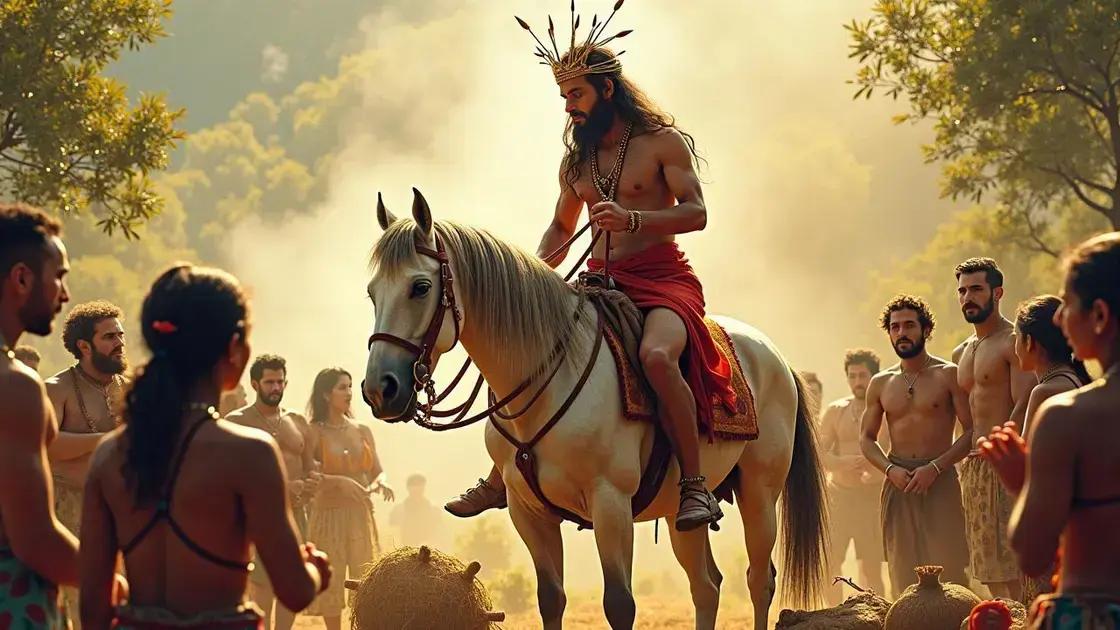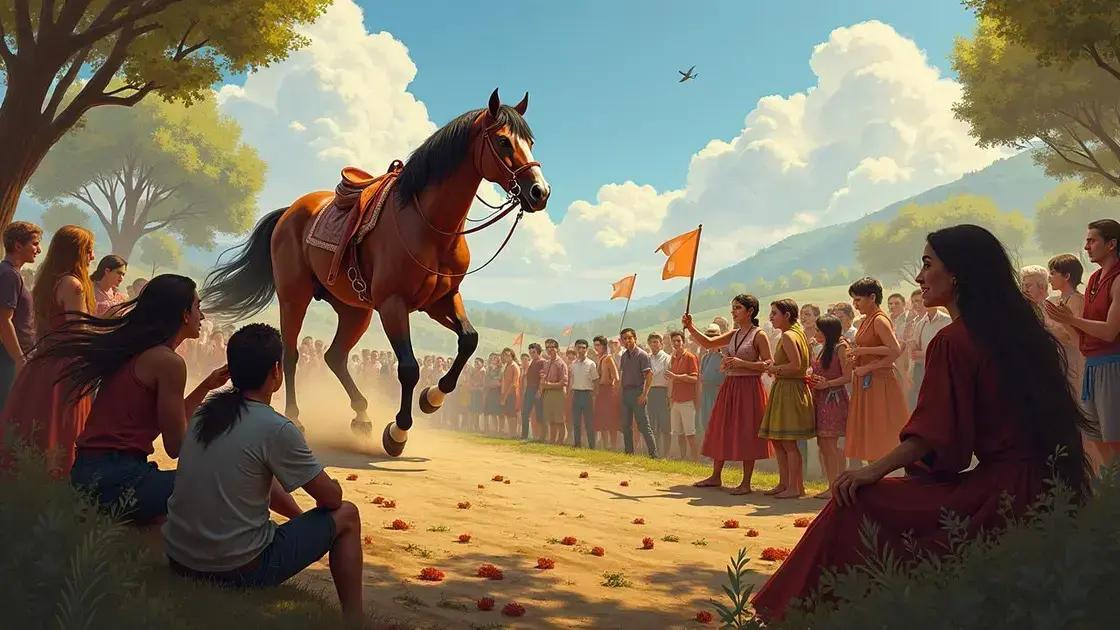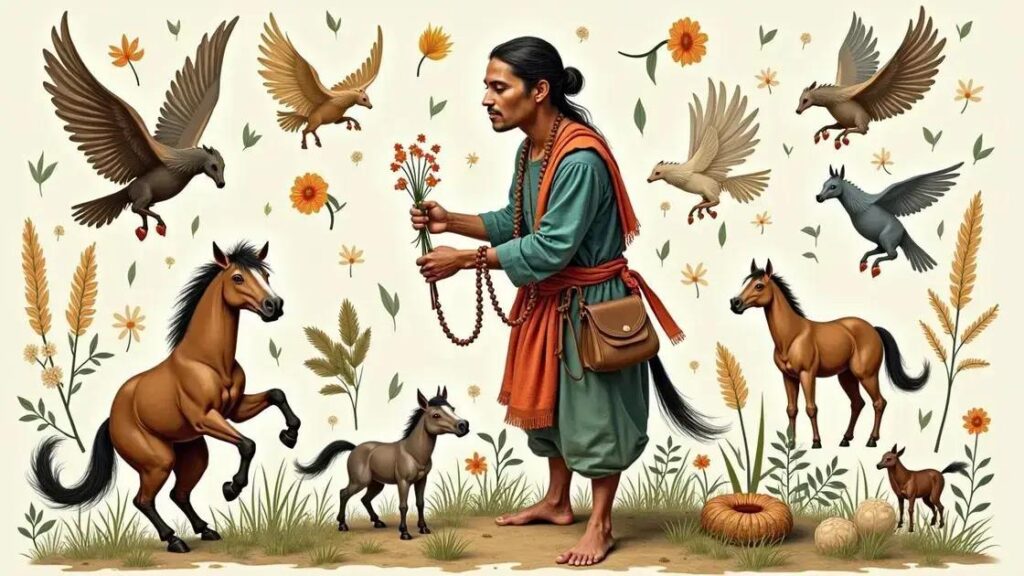The Horse Trick is a traditional healing practice used by healers to promote wellness through rituals, folklore, and community engagement. It symbolizes strength and connects individuals to their cultural heritage, while integrating stories and symbols that empower patients in their healing journeys.
The question of whether traditional healers recommend the Horse Trick can unveil fascinating aspects of cultural healing practices. Many cultures integrate folklore into their therapeutic techniques, often drawing from historical anecdotes and mystical beliefs. In this article, we will examine what the Horse Trick is, discuss traditional healing practices, delve into the cultural significance of this trick, and explore how healers incorporate folklore into their methodologies.
What is the Horse Trick?

The Horse Trick is a fascinating traditional practice that combines elements of folklore, healing, and mysticism. This unique method is often used by traditional healers to address various issues, both physical and emotional. At its core, the Horse Trick involves symbolic acts and rituals that are believed to invoke healing energies.
Origins and Meaning
The origins of the Horse Trick vary among cultures, but it is generally associated with the idea of fertility, strength, and a connection to nature. Traditionally, the horse symbolizes power and freedom, and its involvement in healing rituals reflects these qualities. Healers might use the Horse Trick to channel these attributes, which are thought to enhance the effectiveness of their practices.
How the Trick is Performed
During a session, the healer typically performs specific actions related to the Horse Trick. This may include storytelling, drumming, or the use of horse imagery. These acts are designed to create a connection between the patient and the healing forces being invoked. Participants often report feeling a sense of release or transformation during this process.
The Role of Community
Community plays a significant role in the Horse Trick. Gatherings for these events often promote a sense of belonging and collective healing. When people come together, the energy within the group can amplify the healing effects of the Horse Trick, making it a communal experience rather than an individual one.
In summary, the Horse Trick is much more than a simple act; it is a complex interplay of culture, tradition, and healing artistry. As we explore its place among traditional healers, we can gain insights into its significance and application in contemporary practices.
Traditional Healing Practices Explained

Traditional healing practices are diverse systems that vary by culture, community, and individual beliefs. These practices often focus on the balance of body, mind, and spirit to achieve wellness. Unlike conventional medicine that usually targets specific symptoms, traditional healing takes a holistic approach. This means it addresses the whole person, considering their environment, relationships, and emotional well-being.
Types of Traditional Healing
There are several types of traditional healing practices across the world. Some of the most common include:
- Herbal Medicine: The use of plants and natural substances to treat ailments is a cornerstone of many cultures. Healers often create remedies tailored to an individual’s needs.
- Energy Healing: This includes practices like Reiki or Qigong, which focus on the flow of energy within the body. Practitioners aim to restore balance and harmony to promote healing.
- Spiritual Healing: This practice often includes rituals, prayers, and spiritual guidance. It recognizes the influence of spiritual beliefs on health and well-being.
- Physical Manipulation: Techniques such as massage or acupuncture are also considered traditional healing methods. These practices focus on physical alignment and relief of pain.
Cultural Context
Traditional healing practices are deeply rooted in cultural history and community values. They often emerge from the collective wisdom of generations. For many communities, these practices not only provide health benefits but also reinforce cultural identity and social bonds.
Integrating Traditional and Conventional Practices
In recent years, there has been a growing interest in integrating traditional healing with conventional medicine. This approach recognizes that both systems can coexist and complement each other. Patients often find value in combining these methods to enhance their overall health and well-being.
By understanding traditional healing practices, we can appreciate their role in modern healthcare and the potential they hold for healing and wellness.
Cultural Significance of the Horse Trick

The cultural significance of the Horse Trick is deeply embedded in the traditions of many communities. This practice is not just a method of healing but also serves as a vital link between generations of knowledge and the community’s beliefs. The Horse Trick reflects values of strength, fertility, and harmony, which are essential in various cultures.
Symbolism of the Horse
Horses represent power, freedom, and grace in many cultures. In the context of the Horse Trick, the horse symbolizes the journey toward healing and transformation. It embodies the idea of overcoming obstacles and expressing one’s inner strength. Thus, the Horse Trick becomes a ritualistic dance between the individual and these powerful symbols.
Community Bonding
The Horse Trick is often performed in communal settings, making it a social event as well. It strengthens community ties and allows individuals to come together in support and shared experiences. During these events, people celebrate their heritage and reinforce cultural identities, ensuring that traditions continue to thrive.
Connection to Ancestral Wisdom
This practice also connects participants to their ancestors. Many who practice or witness the trick feel a sense of continuity with their heritage. It serves as a reminder of their community’s history and the healing practices passed down over generations. By engaging in the Horse Trick, individuals honor those who have come before them.
A Spiritual Journey
On a spiritual level, the Horse Trick signifies a journey towards self-discovery and inner peace. Participants often find themselves reflecting on their lives and struggles during the practice. It encourages a sense of connection not only to oneself but also to the greater universe. This spiritual dimension adds to its cultural importance, making it a multifaceted practice that goes beyond mere physical healing.
How Healers Use Folklore in Therapy

Traditional healers often incorporate folklore into their therapeutic practices, using stories, myths, and symbols to aid healing. This method connects the patient to cultural narratives and deep-seated beliefs. By integrating folklore, healers create a rich context that enhances the healing experience.
The Role of Stories
Stories play a vital role in traditional healing. Healers use them to communicate important lessons and to illustrate the challenges that patients may face. These narratives often contain moral and spiritual guidance, helping individuals understand their circumstances in a larger life perspective.
Symbolic Rituals
Many traditional healing practices include rituals based on local folklore. These rituals often involve specific symbols and actions that hold cultural significance. For example, a healer may perform a dance or chant a prayer that references a well-known folk tale, which connects the patient to the collective heritage of their community.
Empowerment through Heritage
Incorporating folklore into therapy empowers patients by linking them to their cultural roots. Understanding one’s own story can foster self-acceptance and a stronger sense of identity. When clients see themselves as part of a broader narrative, they often feel more confident in their healing journeys.
Pathways to Healing
Folklore serves as a pathway to healing by providing comfort and reassurance. Healers often use familiar stories and symbols to evoke positive emotions in patients. This emotional connection can promote relaxation, reduce anxiety, and encourage openness during therapy sessions. Such approaches make the healing process more relatable and resonate on a personal level.
In Conclusion: The Healing Power of Tradition
The exploration of traditional healing practices, particularly the Horse Trick, showcases the rich tapestry of cultural beliefs and methods that influence wellness. By understanding how traditional healers use folklore in therapy, we see the profound connection between culture and healing. These practices not only address physical ailments but also nurture the emotional and spiritual aspects of individuals.
Through stories, rituals, and community involvement, traditional healing fosters a sense of identity and empowerment that benefits both individuals and communities alike. As we recognize the value of integrating these practices within modern healthcare, we open new pathways for holistic healing and cultural appreciation.
Ultimately, the Horse Trick and similar traditions remind us that healing is not just a physical journey but a personal, cultural, and spiritual one, deeply rooted in our shared history.
FAQ – Frequently Asked Questions about Traditional Healing and the Horse Trick
What is the Horse Trick?
The Horse Trick is a traditional practice used by healers that incorporates rituals and symbolism related to horses, aimed at promoting healing and transformation.
How do traditional healers integrate folklore into their therapies?
Healers weave folklore into therapy by using stories, rituals, and symbols that resonate with cultural beliefs, enhancing the healing experience.
What types of traditional healing practices exist?
Types of traditional healing practices include herbal medicine, energy healing, spiritual healing, and physical manipulation techniques such as massage.
What is the cultural significance of the Horse Trick?
The Horse Trick holds cultural significance as it symbolizes strength, fertility, and connection to heritage, often performed in community settings to reinforce identity.
How does folklore empower patients in traditional healing?
Folklore empowers patients by connecting them to their cultural roots, helping them feel a sense of belonging and confidence in their healing journey.
Can traditional healing practices complement modern medicine?
Yes, the integration of traditional healing practices with modern medicine can provide a holistic approach to health, addressing both physical and emotional needs.












